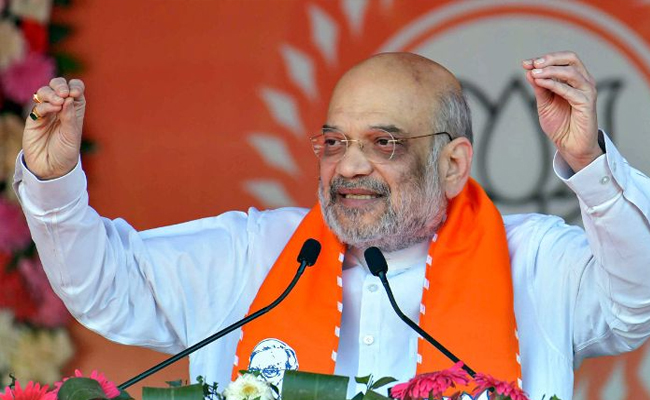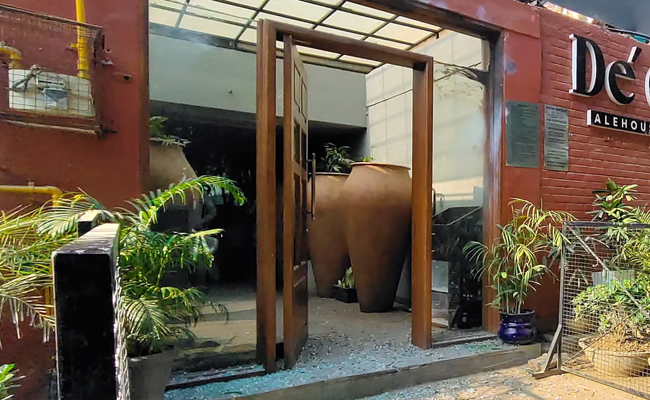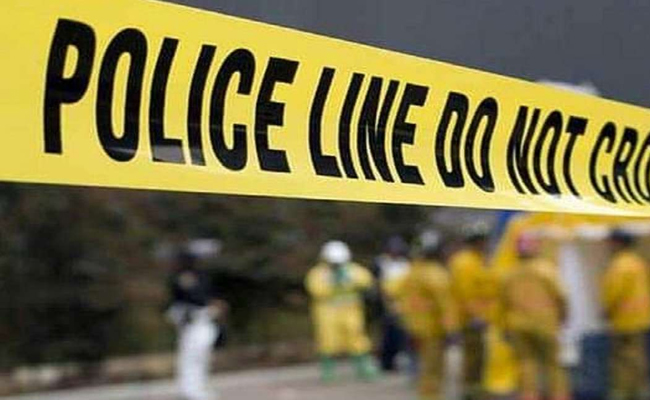New Delhi, June 7: The BJP on Thursday said that the Bhima Koregaon agitation in Maharashtra as "manufactured" and accused the Congress of using Dalits as a "tool" to come back to power.
The Bharatiya Janata Party (BJP) also demanded an answer from Congress President Rahul Gandhi over a letter written after the agitation by Maoist leader concerning purported role of Congress in backing the outfit legally and financially.
The BJP's attack came a day after the Pune police arrested five people allegedly having close Maoist links, including prominent Dalit activist Sudhir Dhawale from Mumbai, Lawyer Surendra Gadling, activist Mahesh Raut and Shoma Sen from Nagpur and Rona Wilson from Delhi in connection with the Bhima Koregaon violence on January 1.
"The hunger for power in the Congress has been exposed as never before to the series of documents and the series of facts that we are going to keep in front of you," BJP leader Sambit Patra told reporteres here at a press conference.
Attacking Congress over the alleged letter recovered from the house of Wilson in Delhi, Patra said, "Letter is an integral document of the Maoists. This letter is means of communication as to how violence can be perpetrated in this country."
Patra said that the Bhima Koregaon incident started on December 31, 2017 and culminated around evening on January 1, 2018 in which a youth lost his life. And the letter was written on January 2, 2018.
According to the BJP leader the letter was allegedly written by a core committee member of the banned outfit, CPI-Maoist, lauding the efforts by Rona and others to make Elgaar Parishad - organised by Dalit and left-wing organisations at Pune's Shaniwarwada on December 31 to commemorate the 200th anniversary of the Bhima Koregaon battle a success.
"But once you go through this letter and you will find that Dalits were being used as tools," the BJP leader alleged.
He also described the agitation in Bhima Koregaon as a "manufactured agitation" instead of a spontaneous one.
Referring to the contents of the letter, the BJP leader said, "Comrade Deepu and Comrade Manglu have been coordinating the Bhima Koregaon programme with Comrade Sudhir. They have got support from large sections of Dalits acrtoss the state and Comrade Jignesh (Mewani) and Comrade Umer (Khalid) are young fighters of our revolution."
"Last year in July and August the Higher Committee has provided two rounds of funds to Comrade Sudhir (Dhawale) for this task. Comrade Shoma (Sen) and Surendra are authorised to provide funds for future programmes as well. The Bhima Koregaon agitation has been very effective," Patra said.
"The death of a youth must be exploited to prepare future agitations and propaganda materials," he read.
"Can anyone of us think of exploiting the death of a youth? But here it is being done to exploit. It is conspired and a letter is written for that," he said.
"This is a culture which has been set time and again as politcial vulturanism on a dead body. You see a dead as an opportunity. And we condemn this," he said.
Hitting out at the Congress President, Patra said, Gandhi has to answer why he was standing with such people who were trying to break the nation.
"Senior comrades from CPI-Maoists leadership have had prior talks with our friends in Congress who suggested to continue Dalit mobilisation more aggressively whatever legal and financial aide is required they are ready to provide through the intermediary (Jignesh)," Patra said reading from the letter.
He also said that the letter proved that there was an "anti-India gang of urban naxals", who had been trying to subvert the country.
Let the Truth be known. If you read VB and like VB, please be a VB Supporter and Help us deliver the Truth to one and all.
New Delhi (PTI): The Supreme Court on Tuesday dismissed a petition seeking to revert to ballot paper voting in elections in the country.
"What happens is, when you win the election, EVMs (electronic voting machine) are not tampered. When you lose the election, EVMs are tampered (with)," remarked a bench of Justices Vikram Nath and P B Varale.
Apart from ballot paper voting, the plea sought several directions including a directive to the Election Commission to disqualify candidates for a minimum of five years if found guilty of distributing money, liquor or other material inducement to the voters during polls.
When petitioner-in-person K A Paul said he filed the PIL, the bench said, "You have interesting PILs. How do you get these brilliant ideas?".
The petitioner said he is the president of an organisation which has rescued over three lakh orphans and 40 lakh widows.
"Why are you getting into this political arena? Your area of work is very different," the bench retorted.
After Paul revealed he had been to over 150 countries, the bench asked him whether each of the nations had ballot paper voting or used electronic voting.
The petitioner said foreign countries had adopted ballot paper voting and India should follow suit.
"Why you don't want to be different from the rest of the world?" asked the bench.
There was corruption and this year (2024) in June, the Election Commission announced they had seized Rs 9,000 crore, Paul responded.
"But how does that make your relief which you are claiming here relevant?" asked the bench, adding "if you shift back to physical ballot, will there be no corruption?".
Paul claimed CEO and co-founder of Tesla, Elon Musk, stated that EVMs could be tampered with and added TDP chief N Chandrababu Naidu, the current chief minister of Andhra Pradesh, and former state chief minister Y S Jagan Mohan Reddy had claimed EVMs could be tampered with.
"When Chandrababu Naidu lost, he said EVMs can be tampered with. Now this time, Jagan Mohan Reddy lost, he said EVMs can be tampered with," noted the bench.
When the petitioner said everybody knew money was distributed in elections, the bench remarked, "We never received any money for any elections."
The petitioner said another prayer in his plea was the formulation of a comprehensive framework to regulate the use of money and liquor during election campaigns and ensuring such practices were prohibited and punishable under the law.
The plea further sought a direction to mandate an extensive voter education campaign to raise awareness and importance of informed decision making.
"Today, 32 per cent educated people are not casting their votes. What a tragedy. If democracy will be dying like this and we will not be able to do anything then what will happen in the years to come in future," the petitioner said.





